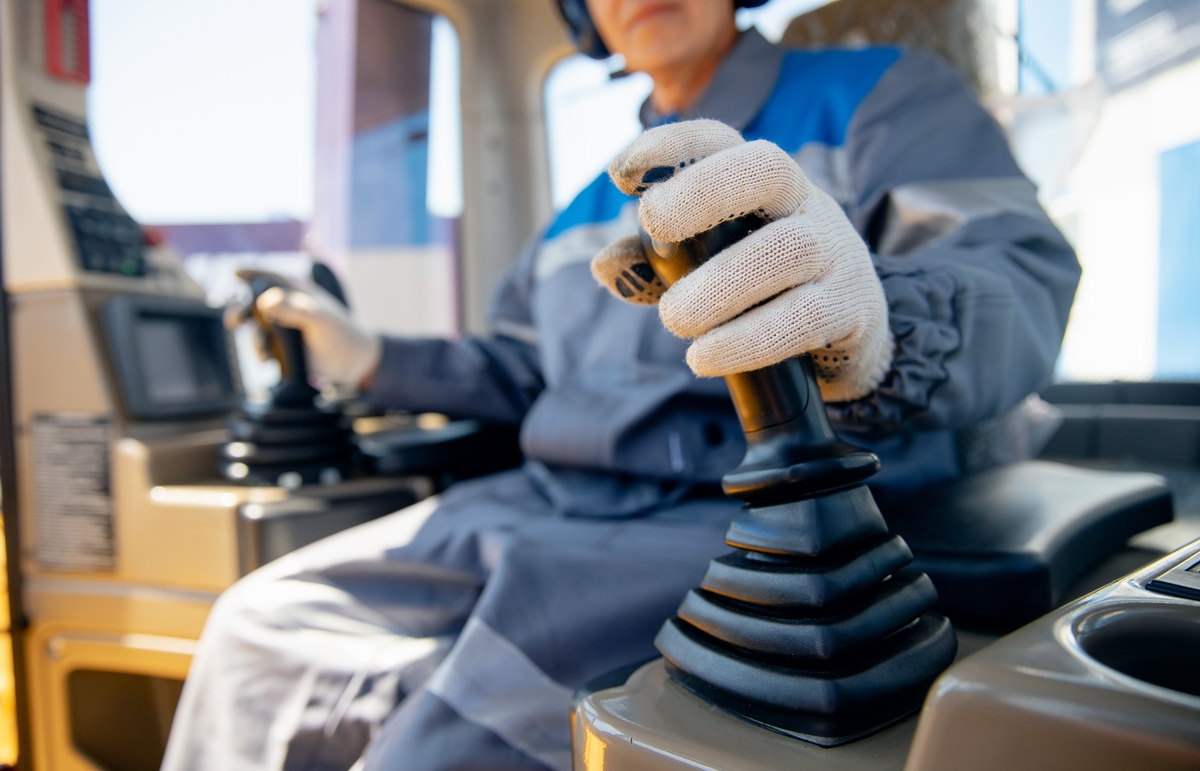How to Use Excavator Controls?

Mastering excavator operation comes down to two essential elements: skilled operator experience and proper control system knowledge. While expertise develops over time, understanding excavator controls is something you can learn right now. Let's dive into the control patterns and safety practices that will transform your excavator operation from clunky to smooth.
Table of Contents:
- Understanding Excavator Control Patterns: ISO vs SAE
- Essential Safety Protocol for Excavator Operation
- Critical Information for New Excavator Operators
- Choose Quality Equipment for Optimal Performance
Understanding Excavator Control Patterns: ISO vs SAE
Every excavator uses one of two standardized control patterns: ISO or SAE controls. These systems were developed by the International Organization for Standardization and the Society of Automotive Engineers, respectively. While both accomplish the same tasks, they operate quite differently.
ISO Controls: The Global Standard
ISO controls dominate the worldwide market and are often called "CAT controls" since Caterpillar popularized this pattern. The International Organization for Standardization established these controls as part of ISO 10968: Earth-moving machinery — Operator's controls, creating consistency across manufacturers globally.
Left joystick controls:
- Forward: Extends the dipper/stick away from the machine
- Backward: Retracts the dipper/stick toward the machine
- Left: Swings the cab and upper frame left
- Right: Swings the cab and upper frame right
Right joystick controls:
- Forward: Lowers the boom
- Backward: Raises the boom
- Left: Closes/curls the bucket inward
- Right: Opens/dumps the bucket outward
SAE Controls: The American Standard
SAE controls are predominantly used in the United States and are sometimes called "John Deere controls" or "backhoe controls." While less common globally, many American operators prefer this pattern.
Left joystick controls:
- Forward: Lowers the boom
- Backward: Raises the boom
- Left: Swings left
- Right: Swings right
Right joystick controls:
- Forward: Extends the dipper/stick away from the machine
- Backward: Retracts the dipper/stick toward the machine
- Left: Closes/curls the bucket inward
- Right: Opens/dumps the bucket outward
Can You Switch Control Patterns?
Many modern excavators offer switchable control patterns. Look for a toggle switch near the floorboard or behind a cab panel. If you're unsure whether your machine has this feature, check with the manufacturer or consult your operator manual.
Essential Safety Protocol for Excavator Operation
Safety isn't optional—it's the foundation of professional excavator operation. Follow these critical steps every time you operate.
Step 1: Pre-Operation Safety Inspection
Never skip the walk-around inspection. This five-minute routine prevents accidents and catches problems before they become expensive failures.
Check for:
- Surrounding hazards and overhead/underground utilities
- Hydraulic leaks under the machine
- Track tension and visible damage
- Boom, stick, and bucket condition
- Fluid levels (hydraulic, engine oil, coolant, fuel)
- Light functionality and control responsiveness
Step 2: Safe Cabin Entry
Proper entry technique prevents falls and injuries. Secure the cabin door, use three points of contact while climbing, and never rush this process.
Once seated:
- Fasten your seatbelt immediately
- Close and lock the cabin door
- Familiarize yourself with all controls before starting
- Adjust your seat and mirrors for optimal visibility
Step 3: Situational Awareness
Constant awareness of your surroundings separates professional operators from amateurs. Before making any movement, scan 360 degrees around your machine.
Key considerations:
- Maintain maximum two-foot ground clearance when traveling
- Watch for overhead power lines, structures, and aircraft
- Identify underground utilities before digging
- Keep other workers and equipment at safe distances
- Reduce bucket visibility issues by lowering the dipper and curling the bucket when needed
Step 4: Preventive Maintenance
Your operator manual contains specific maintenance schedules—follow them religiously. Regular maintenance prevents breakdowns, extends equipment life, and ensures safe operation. Daily checks, weekly services, and scheduled inspections aren't suggestions; they're requirements for professional operation.
Critical Information for New Excavator Operators
Understanding excavator controls is just the beginning. Here's essential information that experienced operators wish they'd known from day one:
- Control muscle memory develops differently for each pattern. If you're switching between ISO and SAE controls, expect a learning curve of several hours. Practice basic movements in an open area before tackling precision work.
- Hydraulic response varies by machine age and maintenance. Newer excavators provide crisp, immediate responses, while older machines may have slight delays. Factor this information into your operation timing and safety margins.
- Environmental conditions affect control sensitivity. Cold weather makes hydraulic fluid thicker, creating sluggish responses. Hot conditions can cause overheating. This information helps you adjust your operating style accordingly.
- Load weight dramatically impacts control behavior. A fully loaded bucket handles completely differently than an empty one. This fundamental information affects everything from swing speeds to boom lift capacity.
Remember that mastering excavator controls isn't just about memorizing joystick positions—it's about developing an intuitive feel for how your specific machine responds under various conditions. This information becomes second nature with experience, but understanding these principles from the start will accelerate your learning curve and help you operate more safely and efficiently from day one.
Choose Quality Equipment for Optimal Performance
Whether you're running ISO or SAE controls, your excavator's performance depends heavily on quality attachments and components. Worn or substandard parts compromise safety, efficiency, and profitability.
For reliable excavator attachments that enhance your machine's capabilities, visit the skidsteers.com store. Our comprehensive selection of high-quality attachments and components ensures your excavator performs at its peak, whether you're tackling construction, landscaping, or agricultural projects. Quality equipment from trusted suppliers makes the difference between struggling through jobs and completing them with confidence and precision.
